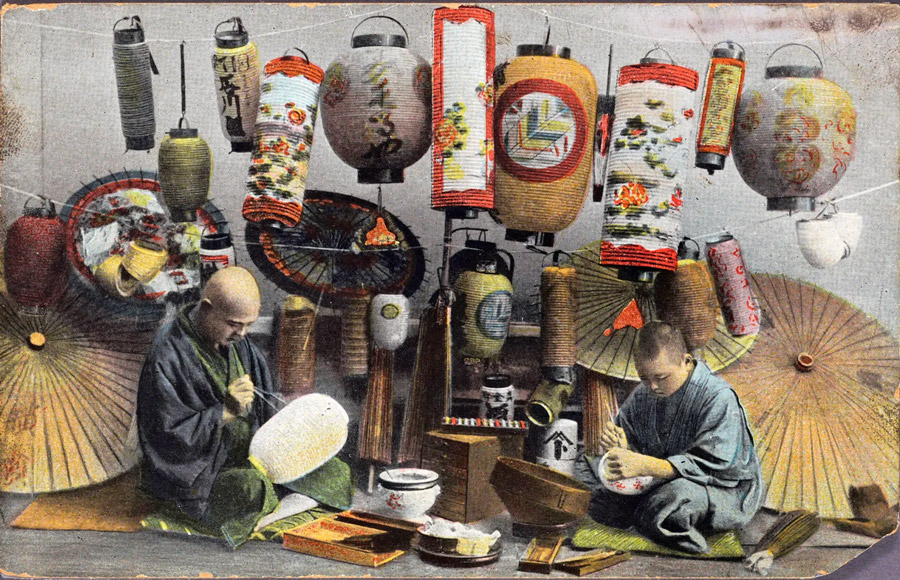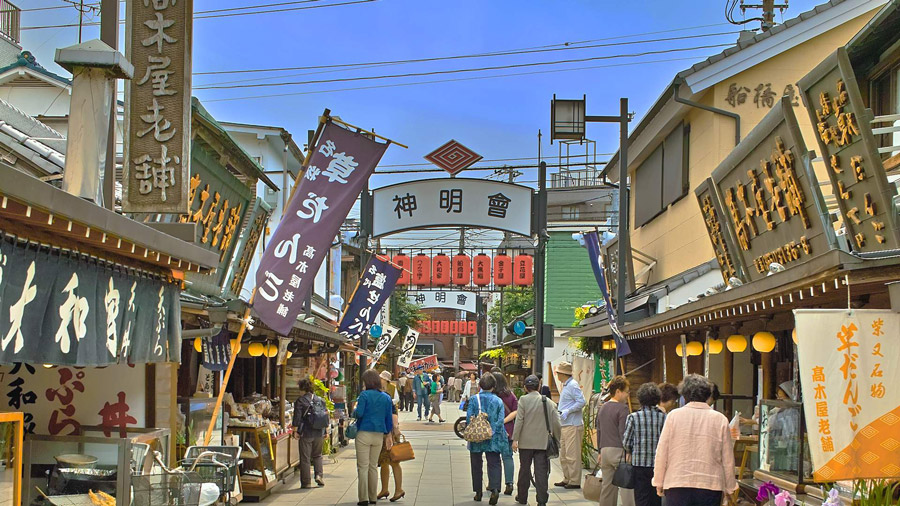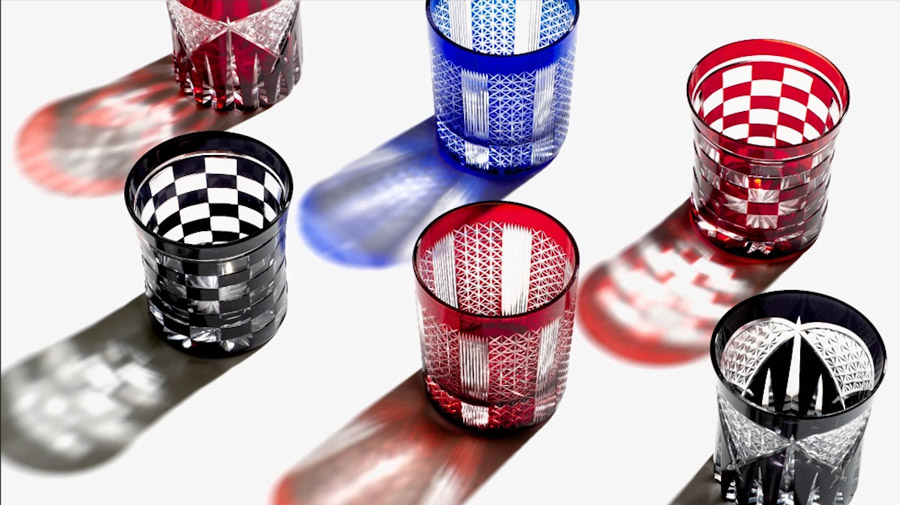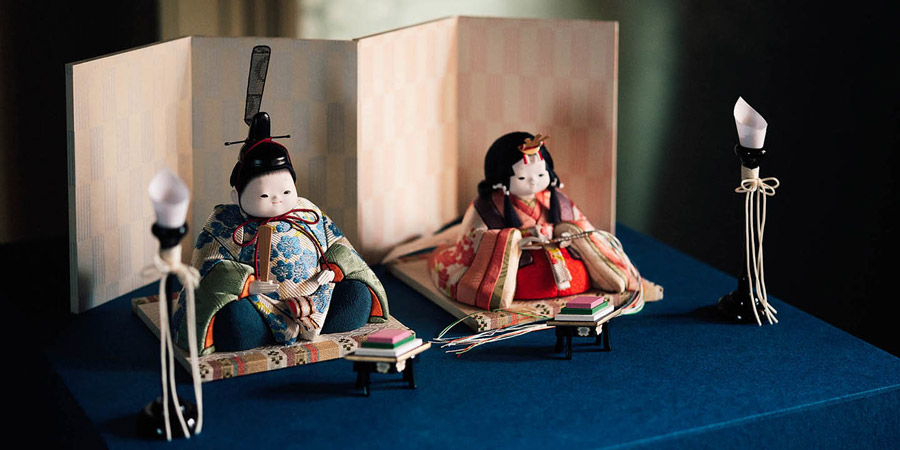Drawing on the previously undocumented stories, recollections, experiences, and oral histories recounted by craftsmen all over Japan, the life and work of such artisans have undeniably undergone significant challenges and changes with regard to their crafting traditions through historical time periods stemming from the 1603 Edo Period, the 1868 Meiji Restoration, World War II, and even the resurgence of the country as an economic superpower in the post-war period.
The precise processes and mechanisms by which the expertise, competencies, and values of craft communities are so developed into and along with each generation of craft practitioners; thus, further demonstrating and elucidating how Japanese traditions are maintained, modified, compromised, or even lost along the way during the production and process of such Tokyo crafts.
Shokunin

The word shokunin (職人) is comprised of two characters –– shoku (職) meaning job, and nin (人) meaning person –– and when fused together, literally translates to “work person.” More than simply putting together these two characters together, there is, however, something much deeper rooted in the Japanese term.
The term shokunin thus procures an image of an individual similar to the likes of a “craftsman,” and “artisan;” someone who creates hand-crafted objects with regard to cultural honored forms and traditional values. The Japanese apprentice is then imparted with the teaching that shokunin does not only encapsulate the possession of technical and practical skills; rather, it implies the attitude and mindset of achieving excellence through constant learning.
Shokunin then plays a prominent role in Tokyo craft through the importance of historical continuity in the context of what we know as tradition, or dentō (伝統). Tokyo shokunin tends to further affix itself to the significance of the realm of Japanese historical aspects as manifested through various forms of customs, craft, skilled gestures, and values to varying degrees.
Background of Tokyo Crafts

One important element that has continued to assert itself would be the touch of history that is ever-present in the lives of contemporary and traditional craft Tokyo practitioners. More than simply being a matter of personal and technical curiosity amongst these craftsmen, the historical element present in such crafts weaves traditional techniques and materials together –– tracing Tokyo crafts further back into Japanese roots during the Edo period and even earlier.
Craftsmen often hold many stories that they are eager to share with the rest of the world –– stories about their ancestors’ experiences as craft workers, the loss and re-emergence of skills and materials, hardships and triumphs, and even the glory days of these crafts are just some of the few aspects that give life and color to the memories and knowledge of these young practitioners.

Before the year 1950, a small town in a large alluvial plain existed near the eventual site of what would become Edo. As a result, it is not unexpected that the origins of Tokyo’s crafting traditions may be traced from most of the old imperial capitals that were located in the Kansai area in the southwest, particularly in and around Kyoto and Nara, as well as the mercantile centers of Sakai and Osaka.
During the new years of the Heian period (794–1185) where numerous aspects of classical Japanese culture, literature, and art were born, this left a lasting impression on the realm of arts and crafts in the future eras and timelines. By the second half of the 9th century, the Japanese essentially stopped importing new technologies and instead, focused on adapting and improving what they already had. This resulted in the emergence of unique crafts and art forms special to the Japanese culture, most especially in relation to the creative styles that have developed under the patronage of the imperial court’s great lords and regents.
In the coming centuries, different forms of Japanese arts and crafts have also been shaped and honed by different powerful influences and eras including Buddhism which introduced temple building, sculpture carving, and scroll painting; the early 17th century which showcased an extravagance of materials and innovation in techniques and styles; and most importantly, the Edo period that brought rise to the golden age of Japan manifested by lacquerware tradition and Shitamachi streets and shops.
Tokyo Crafting Traditions, Materials, and Their Meaning

Contrary to popular and academic belief which associates traditional Japanese craft production primarily with Kyoto and its environs or rural villages that specialize in a single, particular craft tradition, the Tokyo metropolitan area is one of the most diverse traditional craft production sites in Japan, owing to Tokyo’s unique history and its crafting.
Craft makers have what Erwin Christensen (1955) calls a “vocabulary of designs” in which an idea or design is imposed onto raw materials through the use of tools and skills. The transmission of this vital information from generation to generation of craft masters thus builds the framework and stability of such craft forms.
Regardless of the type and nature of the craft and trade they practice, all Tokyo artisans share a number of characteristics including a sense of regional identity based on their location within Japan (e.g. historical shitamachi urban culture), shared challenges associated with the Japanese economy’s downturn since the bursting of the economic bubble in 1990, and other significant aspects of craftwork more specific to individual crafting traditions, particularly to the kinds of materials used during the production process.
Wood and Bamboo Crafts

As Japan is dubbed as a heavily wooded country as forests almost once blanketed the entire country, wood has been around long enough to have often been used as materials when making a wide variety of products in the archipelago. Furthermore, many of the techniques and tools used by traditional wood artisans evolved out of and in relation to those used by traditional temple builders. Tokyo is no exception, with numerous wood and bamboo-making traditions accounting for almost a fifth of all Tokyo-designed products.
Some prominent types of wood and bamboo crafts include Edo sudare, Edo shikki, Tokyo tōkōgei, Edo mokuchōkoku (sculpture and carving), Edo wazao (bamboo fishing rods), Tokyo koto, and Edo sashimono.
Glassworks

In contrast to the abundance of wood and bamboo material crafts, the manufacture of hand-crafted glassware is rarely associated with Japan. However, Japanese glass traditions and manufacturing, in fact, have a long and rather unbroken history. First imported to the Japanese as early as the second century A.D., glass production rose alongside the newly introduced Buddhist religion and influence; thus, becoming the prime material used when creating Buddhist prayer beads and statue ornaments.
As glass-making techniques expanded and improved in the 18th and 19th centuries, craftsmen and merchants in the urban centers offered new domestic glass products such as tableware, lamps, medical equipment, and other everyday objects featuring a variety of decorations. Today, Tokyo craft workers belong to two associations: the Edo Garasu (glass) Kumiai, which comprises free and mold-blown craftworks, and the Edo Kiriko (cut glass) Kumiai.
Mixed Media

In addition to the aforementioned, there are also a number of traditional Tokyo crafts comprised of a combination and variety of other materials and substances. As observed, traditional Tokyo craftsmen frequently combine different types of raw materials to create some sort of “hybrid:” for example, sashimono makers use silver fittings on their cabinets, while ginki silversmiths utilize kuwa wood for their teapot handles. Both wood and animal skins are significant elements in the shamisen, and it is the craftsmen’s increased emphasis on the skin stretching technique.
Other examples of Tokyo crafts that make use of the mixed media approach include the Tokyo shippō (enamel) workers, Edo kimekomi ningyō, Edo ishōgi ningyō (doll) makers, Edo kacchū craftsmen, and the Edo moku hanga (traditional woodblock printmaking). These categories are not meant to be restricted nor mutually exclusive; rather, they can be useful as a heuristic approach for categorizing crafts based on the materials that the practitioners believe are most important to their work.















































